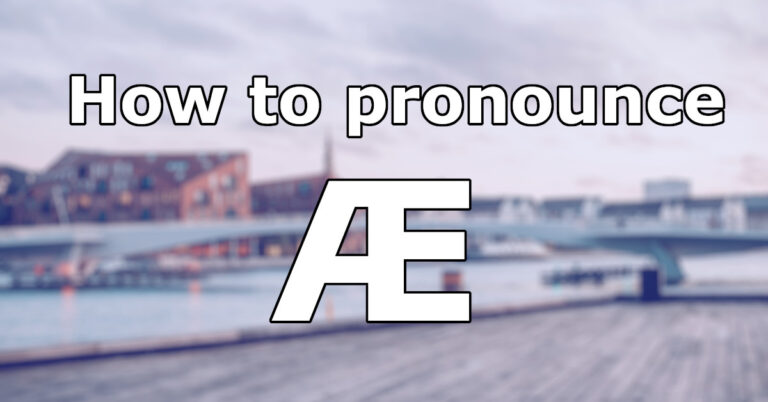How to pronounce the Danish soft D

The big daddy of the weird Danish sounds – just how exactly do you pronounce the soft d?
The good news is that it is not impossible! In fact, with just a little bit of practise, you’ll be rødgrøding with the best of them.
D vs L – the big debate
A quick Google search will find many blog posts and videos of Danes explaining that, ‘the soft d sounds nothing like an l’, and comments from English speakers saying that ‘it sounds exactly like an l’.
What is going on? Are English speakers unable to hear the true sound of the soft d?
Not quite.
In fact, I think the debate mainly comes from the fact that most Danish speakers (and English speakers, for that matter) are unaware of how an ‘l’ sounds in English.
In English, there are two ‘l’ sounds – the light l and the dark l.
The light l is the ‘l’ at the start of words – lamp, light – in which the tip of the tongue touches the alveolar ridge (the hard bit of gum behind the teeth).
The dark l, on the other hand, is pronounced with the tongue down – it never touches the top of the mouth. This often occurs at the end of words, such as ‘bell’.
This second, dark l, is actually quite similar to the Danish soft d – and that is where the confusion lies.
It is a good idea to become aware of these two different ‘l’s as you speak English and think about when you use each one – this will help you distinguish between the two different sounds.
How to pronounce the soft D?
Given what we have just learned about the dark l, one of the most important things to do when pronouncing the soft d, is to make sure your tongue doesn’t touch the top of your mouth.
One way to get started practising this, is to take two fingertips and put them in your mouth, with your nails on your top teeth. This will restrict your tongue movement. Then try saying some words with the soft d sound – mad, gade, sted.
Moving on from here, it is a good idea to push the tip of your tongue into the back of your lower teeth. If you consciously think about the feeling of the lower teeth on the tongue every time you make the soft d, you will ensure that your tongue is in the right position.
The challenge no one warns you about
There is actually one further challenge – and this is something I found even more difficult than learning to pronounce the soft D to begin with.
It is being able to hear the difference between an ‘l’ and a soft ‘d’ in conversation.
I am a strong proponent of learning Danish through speaking, rather than reading. I think it provides a much faster, more enjoyable path to success, without picking up pronunciation problems along the way.
Having said that, there are certain situations in which I have found it difficult to distinguish between a soft ‘d’ and an ‘l’ when I hear it at the end of a word in conversation for the first time. Let’s say I hear the word ‘skyl’ (rinse) for the first time. Because I am used to a final ‘l’ in English being a dark ‘l’, I mistakingly hear it as ‘skyd’ (shoot) – I then try to use this word in a later conversation and accidentally say that I’m shooting the cups instead of rinsing them.
In order to overcome this problem, it is a good idea to keep listening to the difference between the two ‘l’ sounds of English – and maybe start thinking about them as two distinct letters.
For more Danish pronunciation practice, check out this guide on mastering Danish pronunciation, and this guide to the Danish vowels.






